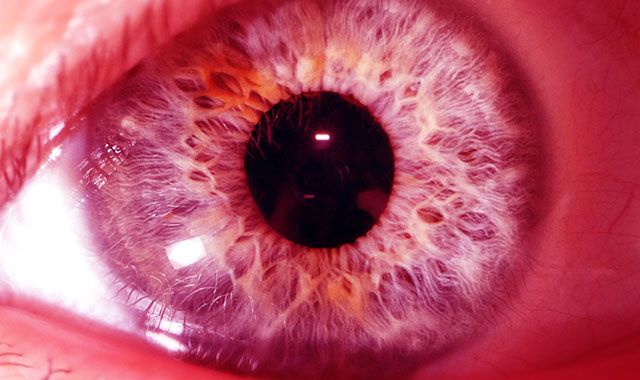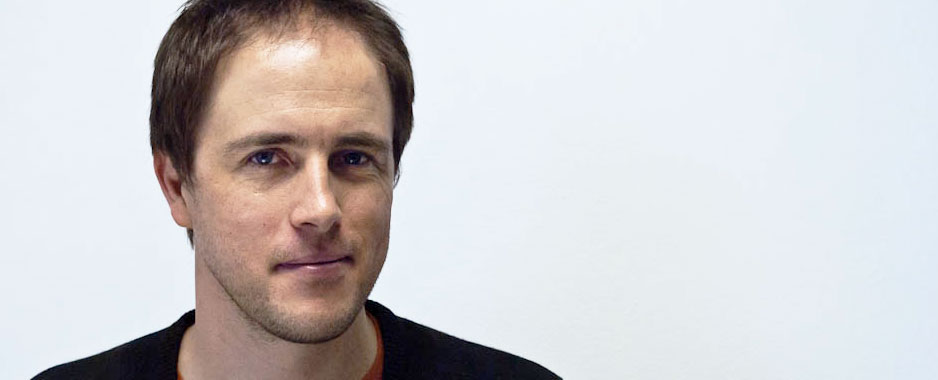 Neil Harbisson is an extraordinary person. Though he was born completely colour blind, he found a way to see colour using an electronic eye that is now permanently grafted to his skull. In 2004, he became the first person to be officially recognised by a government as a cyborg — a being that is part man and part machine. But in 10 or 20 more years, Harbisson will not be that unusual.
Neil Harbisson is an extraordinary person. Though he was born completely colour blind, he found a way to see colour using an electronic eye that is now permanently grafted to his skull. In 2004, he became the first person to be officially recognised by a government as a cyborg — a being that is part man and part machine. But in 10 or 20 more years, Harbisson will not be that unusual.
Harbisson’s electronic eye or “eyeborg” works by translating the frequencies of the colours in front of him into a scale of electronic sounds. These sounds are then played by a chip implanted in the back of his head, and he “hears” the colours in front of him as tones conducted through his skull.
If this already sounds like science fiction, consider the fact that Harbisson can now “see” and distinguish not only the 360 hues visible to the human eye, but infrared and ultraviolet as well. The eyeborg has allowed a completely colour blind man to become a successful visual artist, and to create a unique body of work that explores the boundaries of human senses.
But Harbisson’s cybernetic sense relies on something far more fundamental than computer chips. The human brain is incredibly adaptable, even in adults. As Norman Doidge describes in The Brain That Changes Itself, the human brain can literally rewire itself to adapt to the loss of a limb or one of the senses.
In other words, if we change our organic hardware, then our organic software adapts accordingly. This phenomenon is called neuroplasticity. It explains why people who lose their sight or hearing often describe their other senses becoming much more acute as a result. The brain remaps itself to use the now dormant visual or aural areas of the brain for the other senses.
We can see neuroplasticity at work at a societal level thanks to the explosion in popularity of smartphones. Dinner party whingers and opinion columnists lament our collective obsession with the tiny screens in front of us. But our fixation is, to a certain degree, inevitable. Never before has a portable device extended our senses in such a profound way. We carry around in our pockets an electronic limb capable of touching anything (or anyone) on the planet.
So, in a sense, anyone with a smartphone is already a cyborg. Although Harbisson is an extreme case, he is merely at one end of a continuum. And as the trend in wearable computers (such as the Apple Watch) gains momentum, society will gradually move further down that continuum. As these devices extend our senses, so we will change to integrate them into our lives and into our minds.
If this seems implausible, consider this: almost no one under the age of 18 has ever had to remember a phone number. If you were born in 1996, by the time you entered primary school mobile phones were already ubiquitous. Why would you ever learn to memorise arbitrary 10 digit numbers when your phone could do it for you? And how many people of any age make exact plans about where and when they will meet a friend for drinks? We just WhatsApp or BBM them — planning is now optional.

The idea that we are becoming a race of cyborgs will seem patently ridiculous to some people, and horrifying to others. But our tools are one of the things that make us human. The written word, for example, is a tool that has endured for millennia and shaped the entire planet. As a species we have evolved an effectively infinite collective memory, first using tools such as books and later computers and the Internet.
When the written word first emerged it was seen as sorcery. How could scratches on a clay tablet or a flattened reed tell you when to plant your crops? The same will be true of the first wearable computers, and the first implanted devices. People will scoff at them the way they did at the telephone, the automobile and the television.
Only one thing matters when it comes to technology: that we find it useful. If in 2035 we find that chips embedded in our bodies make it easier to get a job or move freely around the world, we will get them embedded. If we find that electronically heightening our senses is fun or profitable, then we will do so in droves.
We are already cyborgs — our tools have given us powers well beyond the reach of any other organisms. Integrating those tools into our bodies is just a natural evolution of a process that has been in motion since man first learned how to use fire. As Mr Harbisson will tell you, we have so much more to gain than we have to lose.
- Alistair Fairweather is chief technology officer for integrated advertising agency Machine
- This column was first published in the Mail & Guardian Online, the smart news source




